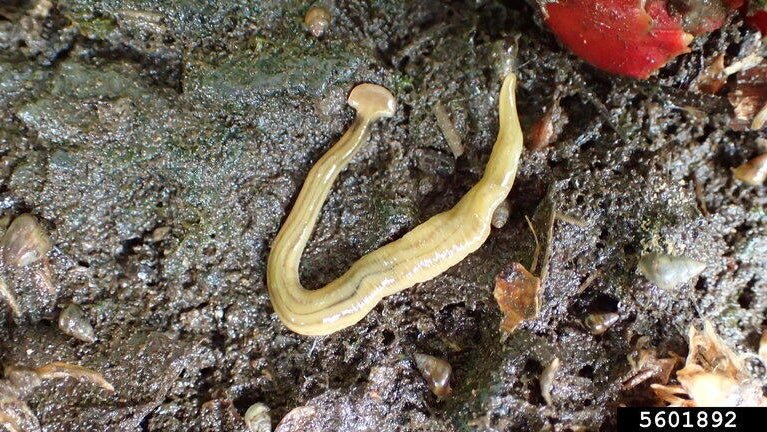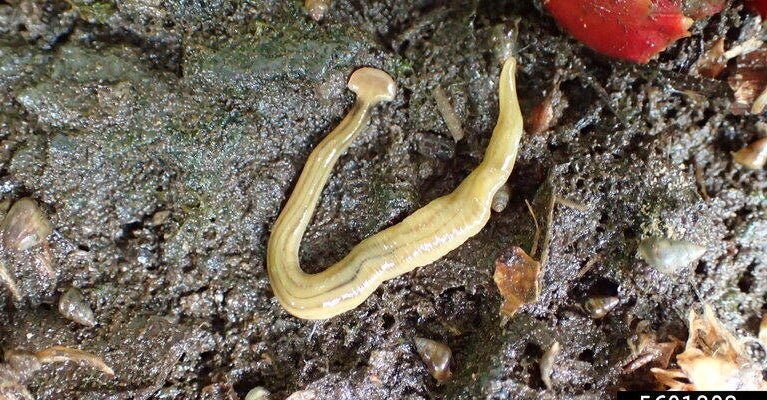
You might not think about garden cleanup as a way to discourage these pests, but the truth is that how we care for our gardens can make a big difference. Just like we tidy up our homes to create a pleasant atmosphere, we can do the same for our gardens to deter unwanted guests. Hammerhead worms thrive in untidy environments, so let’s explore how a little organization and maintenance can go a long way.
Understanding Hammerhead Worms
Before we get into the cleanup practices, let’s take a moment to understand what hammerhead worms are. These flat, elongated worms have a distinctive, hammer-shaped head. They can sometimes grow quite large—up to 12 inches! While they’re not harmful to humans, they pose a serious threat to your garden, as they prey on earthworms, which are crucial for soil health.
Their natural habitat leans toward moist and shadowy areas, like under piles of leaves or in dense vegetation. So, if your garden is a bit chaotic, you might unknowingly be creating a welcoming home for them to thrive. As gardeners, it’s essential to recognize the signs of an infestation and take proactive steps to prevent these unwelcome visitors.
Regular Yard Cleanup: A Must
One of the most straightforward practices you can adopt is regular yard cleanup. Think of it as your garden’s spa day. By keeping your garden tidy, you reduce the places that hammerhead worms love to hide.
Here’s what you can do:
- Remove debris: Piles of leaves, twigs, and other organic materials can attract these worms. Make it a habit to clear away any debris regularly, especially after storms or heavy winds.
- Mow your lawn: Keeping your grass trimmed not only looks better but also reduces damp, shaded areas where these worms might thrive.
- Compost properly: If you compost, ensure it’s well-managed. A poorly maintained compost heap can be a magnet for pests, including hammerhead worms.
When you engage in regular cleanup, you’re not just creating a more pleasant space—you’re actively making it harder for these pests to settle in.
Proper Mulching Techniques
Mulching is often heralded as a gardener’s best friend. It helps retain moisture, suppress weeds, and add nutrients to the soil. But did you know that the way you apply mulch can also influence the presence of hammerhead worms?
Here are some tips:
- Choose the right mulch: Organic mulch, like wood chips or straw, is great, but it should be applied in moderation. Avoid creating thick layers that can retain excessive moisture.
- Keep it dry: Moist environments are inviting for hammerhead worms. Make sure your mulch doesn’t get too wet—this can create a breeding ground.
- Layer wisely: Aim for a layer about 2-3 inches thick. This helps retain moisture without creating a soggy environment.
By practicing proper mulching techniques, you’re not only enhancing your garden’s aesthetics but also discouraging hammerhead worms from making it their home.
Watering Wisely
Watering is a key part of gardening, but it’s easy to overdo it. Watering your plants properly can influence whether hammerhead worms flourish or struggle in your garden. Overwatering creates a damp environment that these worms love.
Here are some tips for watering wisely:
- Water deeply but less frequently: This encourages roots to grow deep and allows the top layer of soil to dry out, making it less hospitable for worms.
- Water early in the day: Morning watering gives plants ample time to absorb moisture before the sun sets, reducing humidity at night when hammerhead worms are most active.
- Use drip irrigation: This method allows for targeted watering, limiting moisture in areas where worms may thrive.
By being smart about your watering habits, you’ll create a healthier environment for your plants and a less inviting one for hammerhead worms.
Encouraging Beneficial Predators
One of the best-kept secrets in gardening is leveraging nature’s own pest control: beneficial predators. Just like we need balance in our lives, so does your garden! Birds, toads, and certain insects can help keep hammerhead worms at bay.
Here’s how you can attract them:
- Set up bird feeders and baths: Birds love to snack on worms. By providing food and water, you’ll encourage them to visit your garden.
- Create hiding spots: Toads, for instance, love to hide in shady areas with rocks and logs. This helps them thrive and keeps hammerhead worms in check.
- Plant diversity: By introducing a variety of plants, you can create a more inviting habitat for beneficial insects that prey on hammerhead worms.
By encouraging these natural allies, you’ll be fostering a healthier ecosystem in your garden, making it less likely for hammerhead worms to take up residence.
Monitoring and Early Detection
Being vigilant in your garden can make all the difference. Keeping an eye on your plants not only helps you spot issues early but also allows you to catch hammerhead worms before they multiply.
Here’s what you can do:
- Inspect regularly: Take a stroll through your garden, especially after rain. Look for any signs of worms—flat, moving bodies are the red flags you want to catch early.
- Keep a journal: Document what you see. Noticing patterns over time can help you anticipate problems before they get serious.
- Reach out for help: Don’t hesitate to contact local gardening clubs or extension services if you suspect an infestation. They can provide insights specific to your area.
Being proactive is key to keeping your garden healthy and worm-free. When you notice a problem early, you can take steps to address it before it gets out of hand.
Incorporating these cleanup practices into your gardening routine can significantly reduce the chances of hammerhead worms taking over your outdoor space. It’s like creating a cozy, inviting home for your plants while keeping unwanted guests at bay. By embracing regular cleanup, smart watering, proper mulching, and encouraging beneficial predators, you’re ensuring your garden remains a healthy oasis.
Remember, gardening is a journey, and each step—no matter how small—matters. So don’t let the idea of hammerhead worms stress you out. With these practices, you can cultivate not just beautiful plants, but a thriving ecosystem that’s both delightful and resilient. Happy gardening!

